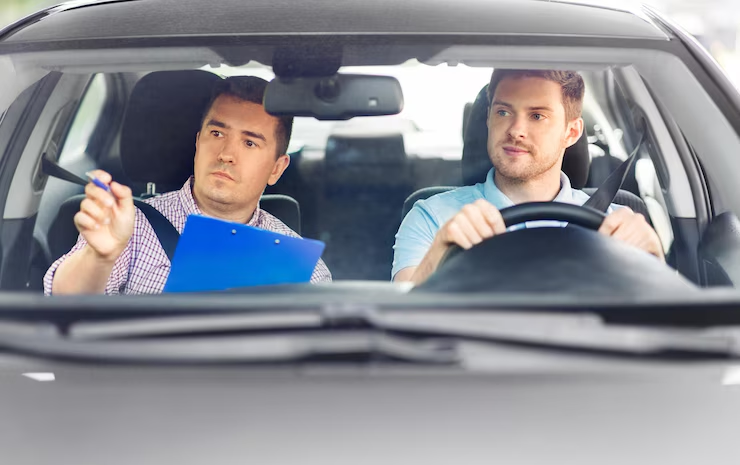DMV Explained for New Drivers: What You Need to Know

Navigating the road isn’t just about learning to drive—it’s about understanding the processes behind obtainingyour license and keeping your vehicle road-legal. If you’re a new driver, chances are you’ve heard of the term “DMV,” but what does the DMV actually mean dmv meaning.
This blog will break down everything you need to know about the DMV, from its history to the services it provides. You’ll also learn the steps for getting your driver’s license, registering your vehicle, and staying informed about road regulations. By the end of this post, you’ll have a clear picture of the DMV’s role in helping you hit the road with confidence.
What Is the DMV?
The DMV stands for the Department of Motor Vehicles. This government agency manages everything related to driver licensing and vehicle registration in the United States. Its primary purpose is to regulate and maintain road safety by ensuring drivers and vehicles meet state-mandated requirements.
For new drivers, the DMV is your gateway to legally starting your driving journey. From applying for your learner’s permit to registering your first car, this is where all the fun (and paperwork) begins.
A Brief History and Evolution of the DMV
Before the modern DMV, there was a patchwork system of road regulations managed locally. By the early 20th century, as the popularity of automobiles surged, the need for a centralized system became clear. States began establishing motor vehicle departments to oversee licensing and enforce road safety laws dmv meaning.
Over the years, the DMV has evolved to adopt new technologies, improving the efficiency of its services. Key milestones include the introduction of digitized records and online renewal options. Today, some DMVs even offer mobile apps and AI-powered systems, making the process faster and more accessible.
Functions of the DMV
The DMV plays a crucial role in the lives of drivers. Here’s a quick overview of its primary functions and services—many of which you’ll need as a new driver:
- Driver Licensing: Issuing learner permits, driver’s licenses, and ID cards.
- Vehicle Registration: Ensuring your vehicle is legally registered with your state.
- Titling Vehicles: Managing changes in vehicle ownership.
- Road Safety Tests: Administering written and on-road driving tests.
- Driving Records: Maintaining and providing access to driver history records.
- Enforcement of Laws: Ensuring compliance with road and traffic laws through registration and licensing.
Each function is designed to keep roads safe while simplifying the administrative process for drivers and vehicle owners.
How to Obtain a Driver’s License
Getting your driver’s license is probably one of the DMV’s most significant functions for new drivers. Here’s a step-by-step guide to walk you through the process:
Step 1. Apply for a Learner’s Permit
- Visit your local DMV office to fill out an application.
- Bring proof of identity, residency, and age (e.g., passport, birth certificate, utility bill).
- Pass a written knowledge test covering traffic laws and road signs dmv meaning.
- Pay the application fee.
Step 2. Practice Driving
- Use your learner’s permit to gain supervised driving experience. Most states require a minimum number of supervised hours before new drivers can apply for a license.
Step 3. Pass the Driving Test
- Schedule your on-road driving test at the DMV when you feel ready.
- Pass the test, demonstrating your ability to drive safely and follow traffic rules.
Step 4. Get Your License
- Receive your provisional or full driver’s license (depending on your state’s regulations).
- Keep in mind, newly licensed drivers may need to adhere to restrictions (e.g., no late-night driving).
How to Register and Title a Vehicle
Once you have a license, you’ll probably want a car. After buying one, the next step is to register and title it through the DMV.
Registering Your Vehicle
Registering your car officially links it to you and makes it legal to drive. Here’s how to do it:
- Provide documents such as proof of ownership (bill of sale) and proof of insurance.
- Complete a vehicle inspection (if state-mandated).
- Pay the registration fee (varies by state).
Titling Your Vehicle
A vehicle title proves who owns the car. When purchasing a vehicle, new or used, you’ll need to provide:
- A signed title transfer document from the seller (if buying used).
- Proof of identity and insurance dmv meaning.
- Payment for the title transfer fee.
DMV Laws and Regulations Every New Driver Should Know
Understanding and obeying DMV laws is essential. Here are some critical regulations to be aware of as a new driver:
- Seatbelt Laws: Seatbelt use is mandatory in all states; this applies to drivers and passengers.
- Speed Limits: Follow posted speed limits, as exceeding them can lead to penalties and fines.
- DUI Laws: Driving under the influence of alcohol or drugs is illegal. It can result in license suspension or worse.
- Insurance Requirements: Most states require drivers to maintain liability insurance to cover damages in the event of an accident.
Violating any of these regulations may lead to tickets, fines, or even loss of your driving privileges.
The DMV Is Adapting—The Future is Bright
Like every organization, the DMV is adapting to meet modern demands. Here are some recent developments and innovations that are improving its operations:
- Online Services: Most states now offer online license renewal, appointment scheduling, and fee payments.
- Digital IDs: Some states are introducing mobile apps for storing a digital version of your driver’s license.
- Self-Service Kiosks: These allow you to complete tasks like registration renewals without visiting a DMV office.
- Eco-Friendly Practices: Paperless processes and eco-friendly license production methods are being adopted to reduce environmental impact.
These improvements show that the DMV is committed to becoming more efficient and user-friendly for everyone, including new drivers like you!
Master the DMV and Drive with Confidence
The DMV might seem intimidating at first, but it’s an essential part of your driving experience. Whether you’re earning your learner’s permit, registering your first vehicle, or staying compliant with road laws, the DMV plays a vital role in guiding new drivers through these processes.



